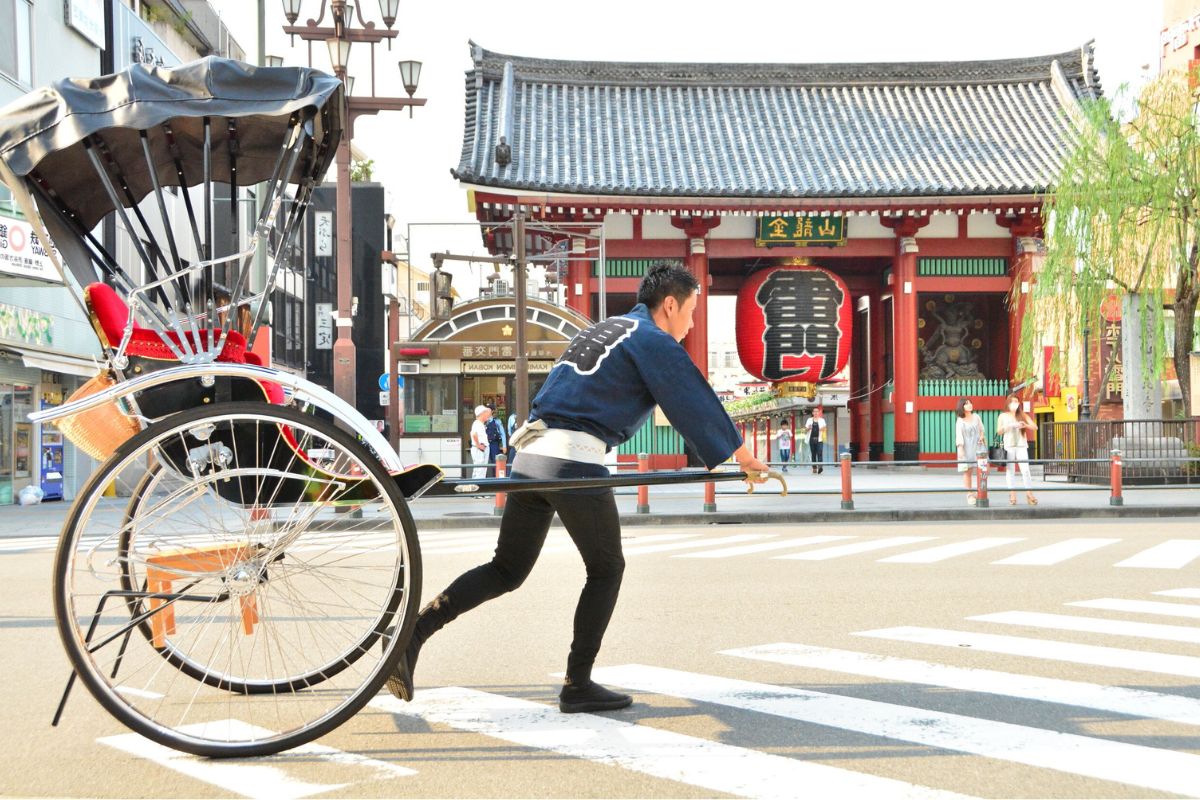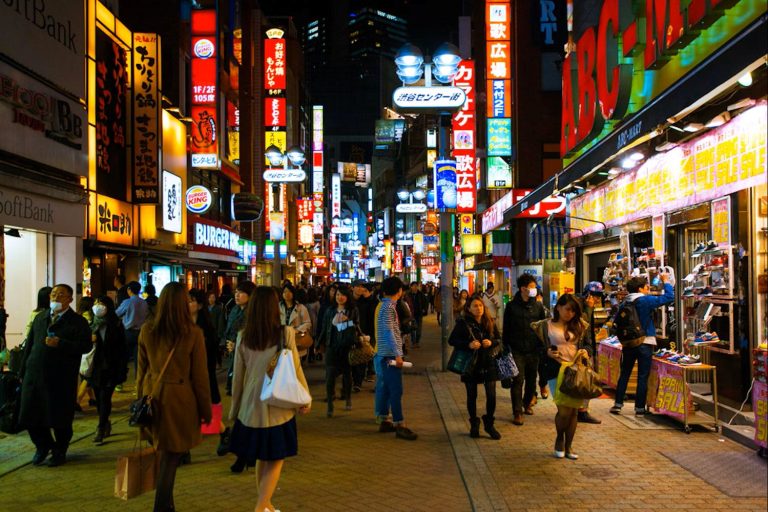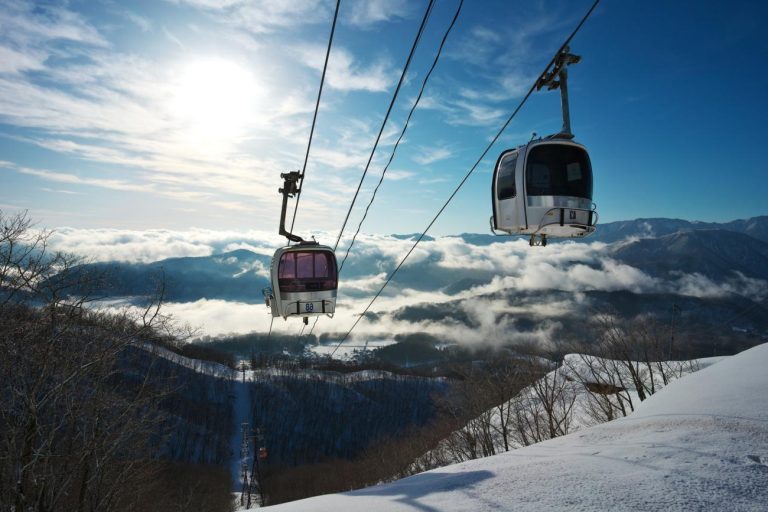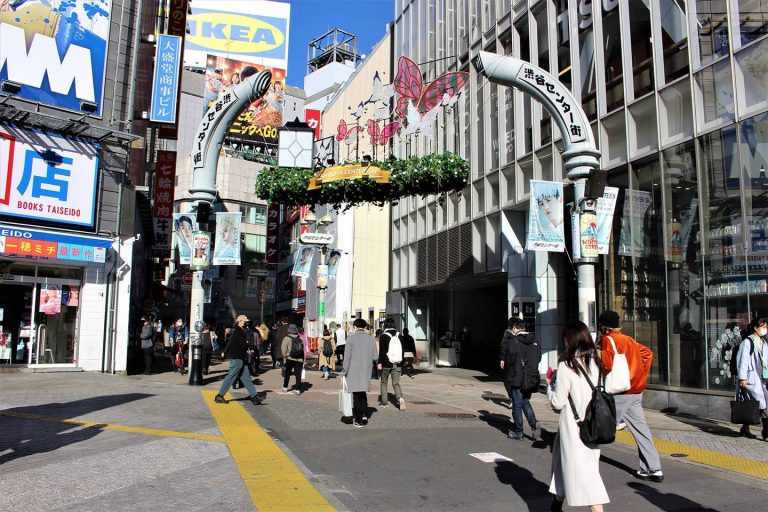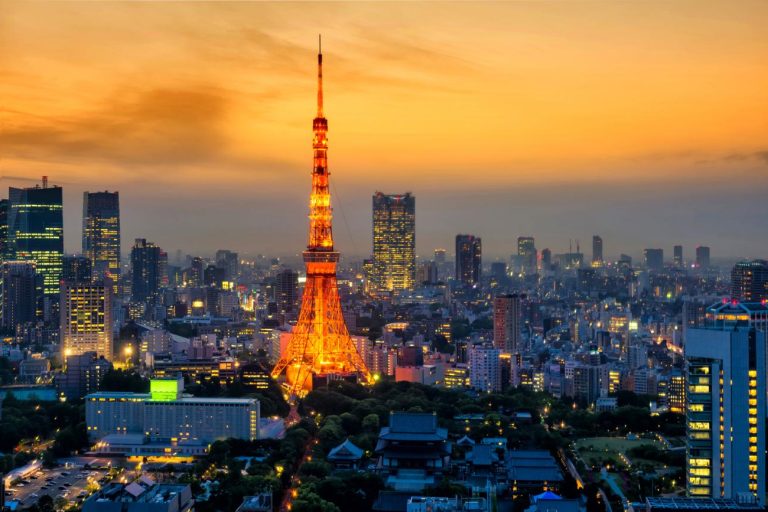Overview of Asakusa ↔ Ueno Local Shuttle
The Asakusa to Ueno local shuttle represents one of Tokyo’s most convenient transportation links, connecting two of the city’s most culturally rich districts. This efficient bus service operates as part of the broader SKYTREE Shuttle network, providing seamless connectivity between historic Asakusa and the museum-filled Ueno area. The shuttle service has become increasingly popular among both tourists and locals who want to experience the best of traditional Tokyo without the complexity of navigating multiple train lines.
What makes this shuttle particularly appealing is its direct route that eliminates the need for transfers. Unlike the traditional approach of taking the Tokyo Metro or JR lines with potential connections, this bus service offers a straightforward journey that allows passengers to relax and enjoy the cityscape. The service connects major tourist hubs, making it an ideal choice for visitors planning to explore multiple attractions in a single day.
Introduction to the Shuttle Service
The SKYTREE Shuttle service launched as part of Tokyo’s effort to improve tourist accessibility to key cultural destinations. Operated by Tobu Bus, this shuttle forms part of a comprehensive network that includes connections to Tokyo Disney Resort and Haneda Airport. The Asakusa-Ueno route specifically caters to cultural tourism, linking the traditional charm of Asakusa’s temples and shopping streets with Ueno’s world-class museums and expansive park.
Key Destinations
Along the Asakusa to Ueno route, passengers can access numerous significant landmarks. In Asakusa, the shuttle stops near Sensoji Temple, Nakamise Shopping Street, and the iconic Tokyo Skytree area. The Ueno terminus provides easy access to Ueno Park, the Tokyo National Museum, Ueno Zoo, and multiple art galleries. This strategic positioning makes the shuttle an excellent choice for cultural enthusiasts.
Operational Hours
The shuttle operates daily with extended hours to accommodate various travel schedules. Service typically begins around 9:00 AM and continues until approximately 8:00 PM, though exact times may vary seasonally. The extended operational window ensures that both early morning temple visits and evening cultural activities remain accessible via this convenient transportation option.
Frequency of Service
Buses run at regular intervals throughout the day, with peak frequency during tourist-heavy periods. During busy seasons, shuttles operate approximately every 15-20 minutes, while off-peak times may see slightly longer intervals. This frequency ensures minimal waiting times and allows for flexible travel planning without strict scheduling constraints.
Travel Duration
The journey between Asakusa and Ueno typically takes 15-25 minutes, depending on traffic conditions. This timing can fluctuate based on the time of day, weather conditions, and special events in either district. The relatively short travel time makes it practical for visitors wanting to explore both areas within a single day.
Fare Structure and Payment Options
The shuttle service maintains an affordable and straightforward pricing structure that appeals to budget-conscious travelers. At 220 yen for both adults and children, the fare represents excellent value compared to other transportation options in Tokyo. This flat-rate pricing eliminates confusion about distance-based calculations and makes budgeting simpler for tourists unfamiliar with Tokyo’s transportation costs.
Payment flexibility stands out as a major advantage of this service. The shuttle accepts multiple payment methods, ensuring that both tech-savvy travelers and those preferring traditional payment methods can easily access the service. This inclusive approach reflects Tokyo’s broader effort to accommodate diverse visitor preferences and technological comfort levels.
Standard Fare Details
The uniform fare of 220 yen applies regardless of boarding or alighting points along the route. This simplified pricing structure means passengers don’t need to worry about zone calculations or distance measurements. The same rate applies to both adults and children, making family travel planning more straightforward and budget-friendly.
Payment Methods Accepted
Passengers can pay using cash, IC cards (PASMO or Suica), or mobile tickets through designated apps. This variety ensures that visitors with different technological preferences or payment habits can easily use the service. IC cards offer the additional convenience of tap-and-go functionality, speeding up boarding processes during busy periods.
One Day Pass Options
For visitors planning multiple trips, One Day Passes provide significant savings and convenience. These passes offer unlimited rides on the shuttle service for a single day, making them ideal for tourists wanting to move freely between Asakusa and Ueno multiple times. The pass system encourages exploration and spontaneous travel decisions.
Mobile Ticketing
The Jordan Corporation Norikae Annai App enables mobile ticket purchases, appealing to tech-savvy travelers who prefer digital solutions. This app-based system allows advance purchase and eliminates the need for exact change or physical ticket handling, streamlining the boarding process significantly.
Ticket Purchase Locations
Ticket accessibility plays a crucial role in the shuttle’s user-friendliness, with multiple purchase points strategically located throughout both districts. The variety of purchase locations ensures that travelers can easily obtain tickets regardless of their starting point or preferred payment method. This comprehensive distribution network reflects careful planning to maximize passenger convenience.
The integration with existing transportation infrastructure makes ticket purchasing feel natural and intuitive. Rather than requiring visits to specialized locations, many purchase points coincide with areas tourists naturally visit, such as hotels, major stations, and information centers.
Where to Buy Tickets
Tickets and passes are available at several convenient locations, including Tobu Top Tours Asakusa Station, the SKYTREE Shuttle Information Counter, and Asakusa View Hotel. These strategically placed outlets ensure easy access for both planned and spontaneous travel. Each location provides multilingual support to assist international visitors with purchase processes.
Using IC Cards
IC cards like PASMO and Suica can be used both for individual ride payments and One Day Pass purchases. This integration with Tokyo’s broader transportation payment system means visitors already using IC cards for other travel don’t need separate payment methods. The cards can be loaded with passes directly at designated machines or counters.
Mobile App for Ticketing
The mobile ticketing option through the Jordan Corporation app provides maximum flexibility for tech-comfortable users. This system allows ticket purchase from anywhere with internet connectivity, enabling advance planning and eliminating queuing time at physical locations. The app interface supports multiple languages for international accessibility.
Restrictions on Pass Purchases
Important restrictions apply to pass purchases, particularly regarding IC card usage. The same IC card cannot be used to purchase different types of passes on the same day, requiring careful planning for complex itineraries. These restrictions help prevent system conflicts while maintaining fare integrity across the network.
Convenience Features
Modern travelers expect technological integration and real-time information, expectations that this shuttle service meets through various digital conveniences. These features transform a simple bus ride into a connected, informed travel experience that reduces uncertainty and enhances overall satisfaction.
The emphasis on user-friendly technology reflects Tokyo’s broader commitment to smart city initiatives and tourist-friendly infrastructure. These digital enhancements make the service accessible to international visitors while providing the reliability that local commuters demand.
Real-Time Updates
Passengers can access real-time arrival information and service updates through various digital channels. This transparency helps travelers plan their journeys more effectively and reduces waiting time uncertainty. Real-time information proves particularly valuable during peak tourist seasons when schedules might experience minor variations.
User-Friendly Apps
Dedicated mobile applications provide comprehensive journey planning tools, including route information, fare details, and scheduling updates. These apps consolidate all necessary travel information into a single, accessible platform that works across different devices and operating systems.
Multi-Language Support
Recognizing Tokyo’s international appeal, the service provides information and support in multiple languages. This linguistic accessibility ensures that language barriers don’t prevent visitors from confidently using the shuttle service, contributing to a more inclusive tourism experience.
Connecting Routes and Services
The Asakusa-Ueno shuttle operates as part of a larger transportation ecosystem, connecting seamlessly with other services throughout Tokyo. This integration allows for complex, multi-destination journeys without the typical complications of navigating separate transportation systems. Understanding these connections helps travelers maximize their mobility options.
Similar to how the Ikebukuro to Ueno bus service connects different districts, this shuttle provides crucial links between major tourist areas. The network approach means that visitors can easily combine multiple shuttle routes for comprehensive city exploration.
Connections to Other Shuttle Services
The shuttle connects with other SKYTREE Shuttle routes, including services to Tokyo Disney Resort and Haneda Airport. This network approach allows travelers to create complex itineraries using a single, familiar transportation system. The connections are designed to minimize transfer times and maximize convenience.
Nearby Attractions
Both terminals provide access to numerous attractions within walking distance. From Asakusa, visitors can easily reach the Tokyo Skytree area, while Ueno offers immediate access to multiple museums and Ueno Park. The strategic terminal locations maximize the number of destinations accessible from each stop.
Integration with Public Transport
The shuttle terminals connect smoothly with Tokyo’s broader public transportation network, including JR lines, Tokyo Metro, and other bus services. This integration means travelers can combine the shuttle with other transportation modes for journeys extending beyond the Asakusa-Ueno corridor.
Travel Tips for Tourists
Successful shuttle travel requires understanding peak times, service characteristics, and passenger expectations. These insights help visitors make informed decisions about when and how to use the service most effectively. Smart planning can significantly enhance the overall travel experience.
The shuttle experience differs from traditional Tokyo train travel, offering unique advantages and considerations. Understanding these differences helps tourists set appropriate expectations and make the most of their journey.
Best Times to Travel
Early morning and late afternoon generally offer the most comfortable travel conditions with shorter wait times. Peak tourist hours, particularly around major meal times and during weekend afternoons, can result in more crowded conditions. Planning travel around these patterns can improve comfort levels significantly.
What to Expect on the Shuttle
The buses feature comfortable seating, air conditioning, and large windows for sightseeing during the journey. Unlike crowded train cars, the shuttle environment allows for relaxed conversation and photo opportunities. Passengers should expect a more leisurely pace compared to Tokyo’s famously efficient train system.
Safety and Accessibility
The shuttle service maintains high safety standards with professional drivers and well-maintained vehicles. Accessibility features accommodate passengers with mobility challenges, including wheelchair access and priority seating. Safety announcements and emergency procedures are clearly communicated in multiple languages.
Sightseeing Opportunities Along the Route
The journey between Asakusa and Ueno offers glimpses of Tokyo’s diverse urban landscape, from traditional neighborhoods to modern developments. Passengers can observe the city’s architectural evolution and cultural transitions during the relatively short but scenic route.
Unlike underground train travel, the shuttle provides continuous visual engagement with Tokyo’s streetscape. This surface-level perspective offers insights into daily Tokyo life that underground transportation cannot provide.
Cultural Sites in Asakusa
Asakusa represents traditional Tokyo at its finest, with Sensoji Temple serving as the area’s spiritual centerpiece. The historic Nakamise Shopping Street offers traditional crafts and snacks, while the nearby areas showcase traditional architecture and cultural practices. The Asakusa to Tokyo Skytree bus provides additional connectivity to modern attractions.
Ueno Park and Museums
Ueno Park houses multiple world-class museums, including the Tokyo National Museum and National Museum of Western Art. The park itself offers seasonal beauty, particularly during cherry blossom season. Ueno Zoo provides family-friendly attractions, while the area’s numerous galleries cater to art enthusiasts.
Shopping Areas
Both districts offer distinct shopping experiences, from Asakusa’s traditional craft shops to Ueno’s modern retail outlets. The contrast between traditional and contemporary shopping environments provides insight into Tokyo’s commercial evolution. Visitors can easily experience both shopping cultures within a single day using the shuttle service.
Final Thoughts on the Shuttle Experience
The Asakusa-Ueno shuttle represents thoughtful urban planning that prioritizes tourist convenience while serving local transportation needs. Its success demonstrates how targeted transportation solutions can enhance cultural tourism while maintaining operational efficiency.
User feedback consistently highlights the service’s reliability, affordability, and convenience. These positive responses suggest that the shuttle fills a genuine transportation gap in Tokyo’s extensive but sometimes complex transit network.
Customer Feedback
Passenger reviews emphasize the service’s punctuality, cleanliness, and staff helpfulness. International visitors particularly appreciate the multilingual support and straightforward fare structure. The positive feedback indicates strong satisfaction with both the practical and experiential aspects of the service.
Overall Satisfaction Ratings
High satisfaction ratings reflect successful execution of the service concept. Passengers consistently rate the shuttle highly for convenience, value, and reliability. These ratings suggest that the service meets or exceeds passenger expectations across multiple performance categories.
Future Improvements
Ongoing service enhancements focus on digital integration, schedule optimization, and expanded multilingual support. Future improvements may include additional route connections and enhanced real-time information systems. The commitment to continuous improvement ensures the service remains relevant and valuable for evolving passenger needs.
Frequently Asked Questions
What is the fare for the Asakusa to Ueno shuttle?
The fare for the shuttle is a flat rate of 220 yen for both adults and children.
How frequently do the shuttles run?
During peak tourist seasons, shuttles operate approximately every 15-20 minutes, with longer intervals during off-peak times.
What are the operational hours of the shuttle?
The shuttle operates daily from around 9:00 AM to approximately 8:00 PM.
Where can I purchase tickets for the shuttle?
Tickets can be purchased at various locations including Tobu Top Tours Asakusa Station, the SKYTREE Shuttle Information Counter, and the Asakusa View Hotel.
Is there a mobile app available for ticket purchases?
Yes, the Jordan Corporation Norikae Annai App allows for mobile ticket purchases.
Enhancing Your Tokyo Experience
The Asakusa-Ueno local shuttle not only simplifies travel between two iconic districts but also enriches the journey through its convenient services and cultural connections. By choosing this shuttle, visitors can effortlessly explore the traditional and modern facets of Tokyo.
